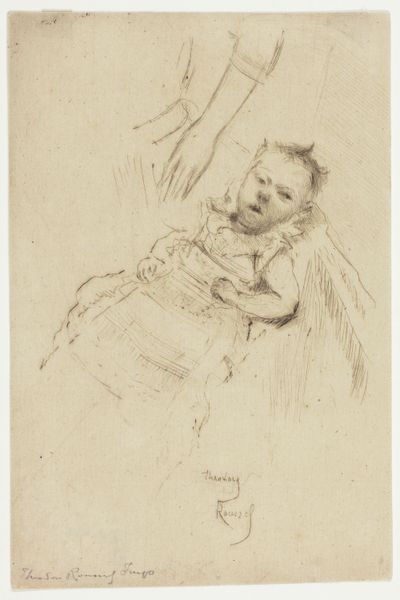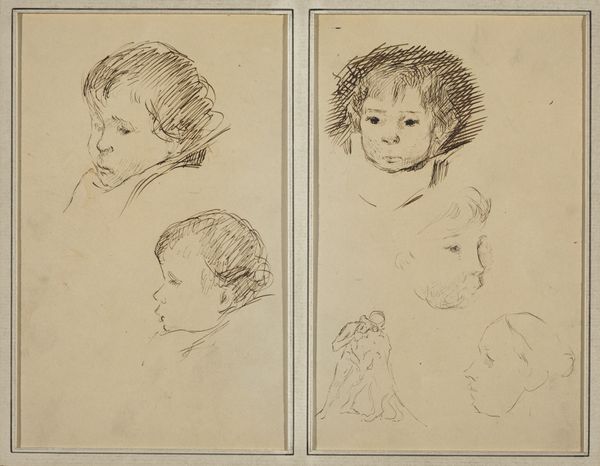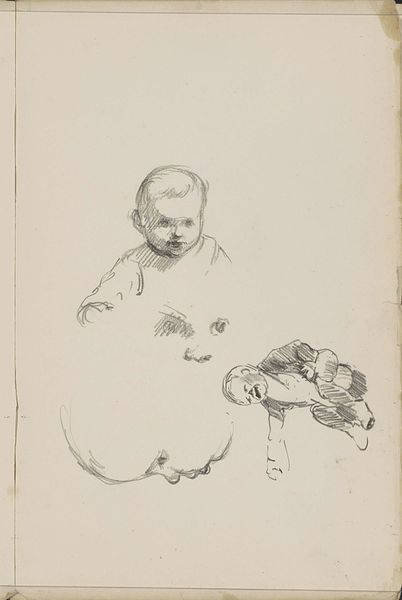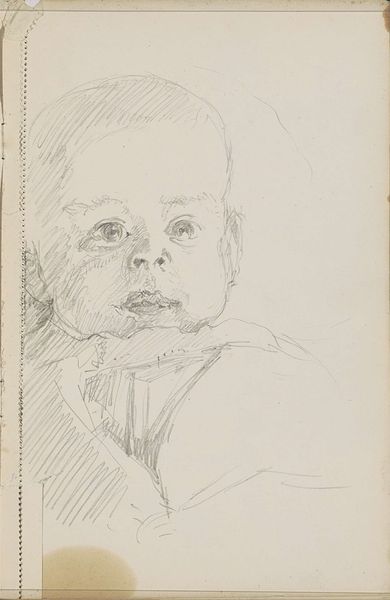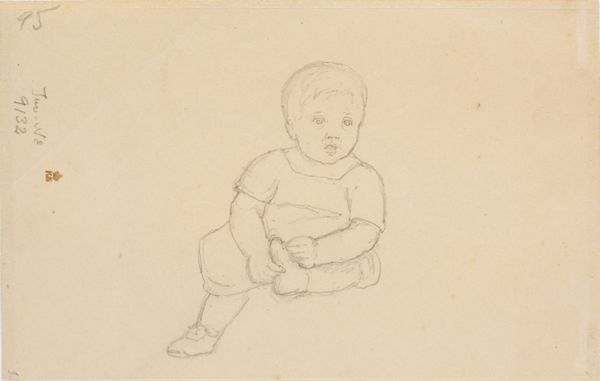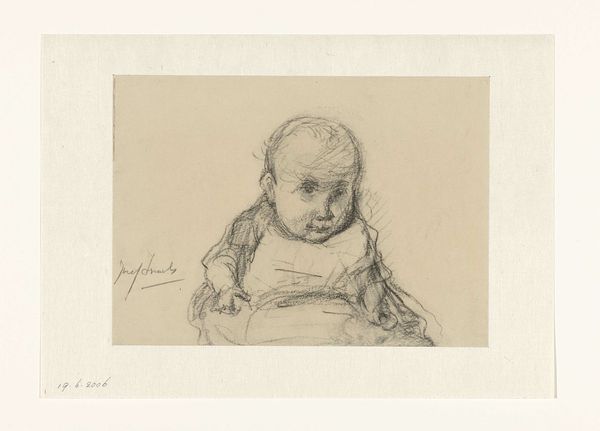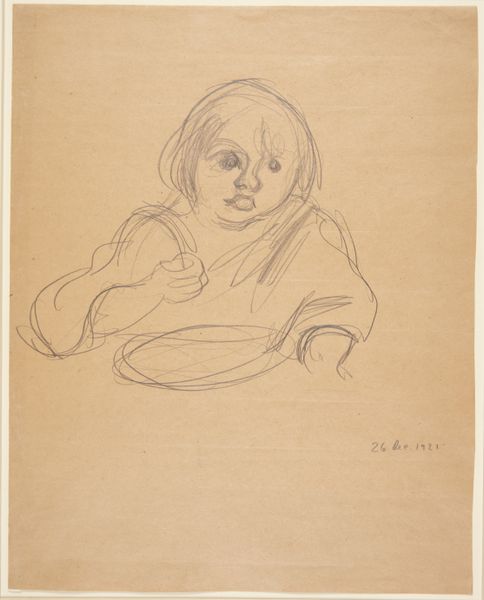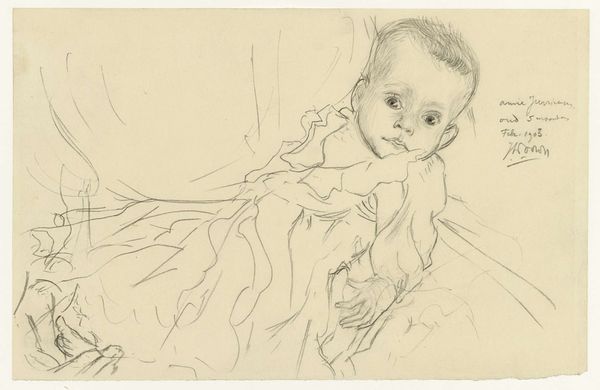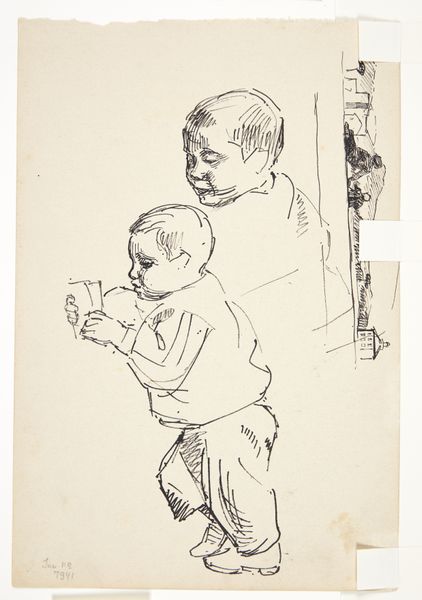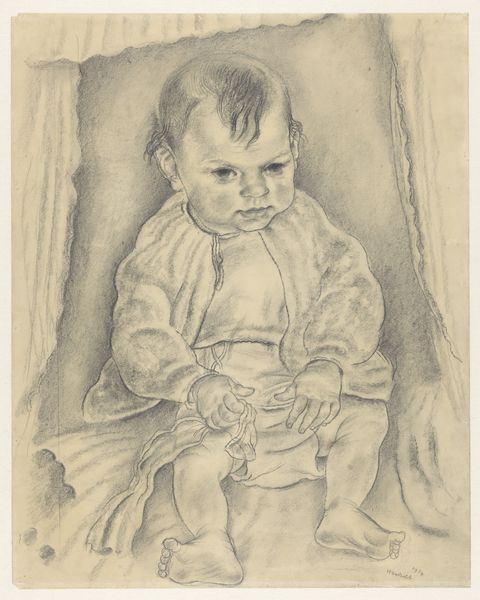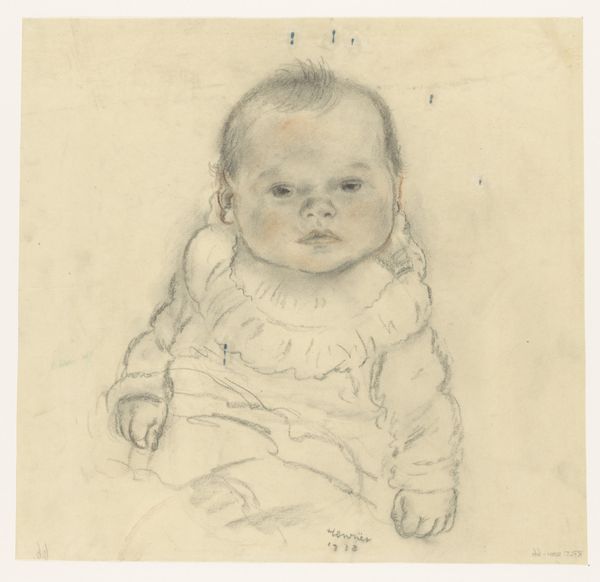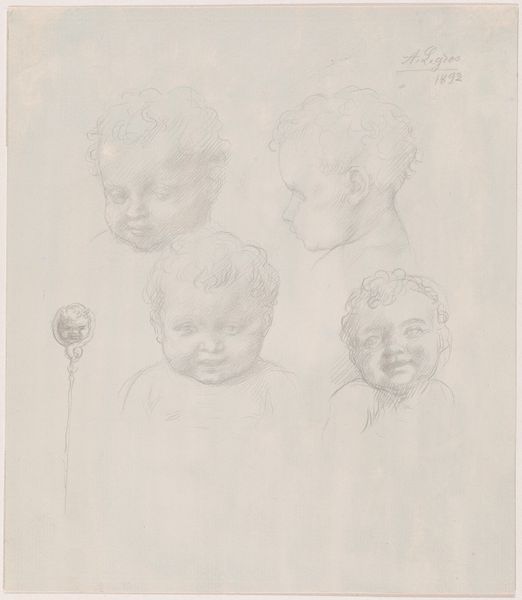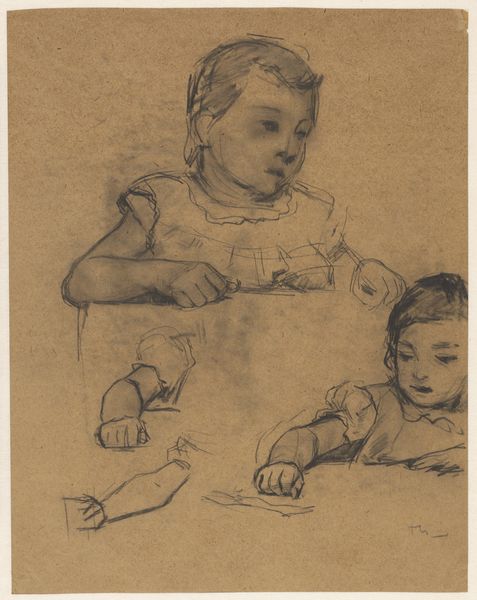
drawing, pencil
#
portrait
#
pencil drawn
#
drawing
#
light pencil work
#
pencil sketch
#
figuration
#
personal sketchbook
#
pencil drawing
#
ink drawing experimentation
#
pencil
#
sketchbook drawing
#
portrait drawing
#
pencil work
#
sketchbook art
#
realism
Dimensions: height 488 mm, width 338 mm
Copyright: Rijks Museum: Open Domain
Editor: Here we have Henk Henriët's "Baby in een kader en onder enkele figuren," created between 1936 and 1940. It’s a pencil drawing, quite a simple sketch really, almost like a study. The baby's portrait, boxed at the top, is quite charming, but the figures beneath are… well, somewhat grotesque. What strikes you most about this juxtaposition? Curator: I see this work reflecting the broader cultural anxieties present in Europe during that pre-war period. Notice the caricature-like quality of the figures; that wasn’t uncommon then, reflecting societal anxieties about power, authority, and the 'other.' Henriët is presenting us with seemingly harmless subject matter – a baby – but subverting that innocence with these unsettling figures below. Does that resonate with your reading? Editor: Yes, I hadn't explicitly thought of that, but it does make sense. It’s almost like the baby is oblivious to the brewing storm beneath, and those unsettling figures reflect the broader social anxieties about what lies ahead. What is the function of this portrait juxtaposed to other "less beautiful" figures? Curator: I think that Henriët uses this portrait style and position in order to criticize what society does with vulnerable children and, specifically, their innocence. Perhaps they also serve as visual metaphors for the ideologies looming at the time, the baby as hope contrasted with these potential corrupting influences, reflecting anxieties that resonated widely. Editor: That gives the drawing a new level of depth. I appreciate that context, because initially, I wasn’t quite sure how to read these figures. Curator: Exactly. The "politics of imagery," as it were. Even a simple sketch like this can reveal much about its time and the artist's commentary on it. Thinking about Henriët’s other works and the socio-political landscape helps unlock these possible interpretations. Editor: That is so interesting! I will consider the background when judging an artwork from now on. Curator: That’s excellent. Never underestimate how a piece participates in a bigger conversation.
Comments
No comments
Be the first to comment and join the conversation on the ultimate creative platform.
